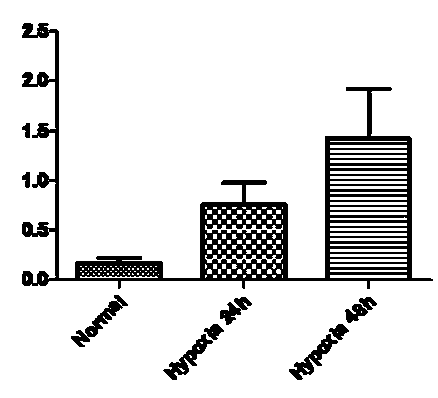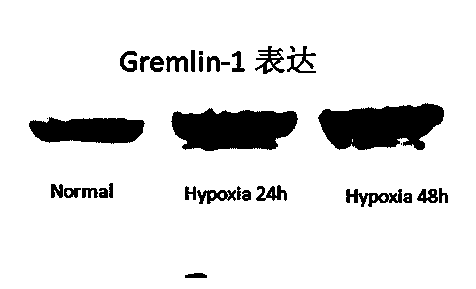Application of immortalized human lung microvascular endothelial cell complex cell factor in preparing biological agent for repairing ischemic tissue injury
A technology of endothelial cells and cytokines, used in cardiovascular system diseases, skin diseases, drug combinations, etc., to achieve obvious tissue regeneration, promote blood vessel regeneration, and regulate immune response.
- Summary
- Abstract
- Description
- Claims
- Application Information
AI Technical Summary
Problems solved by technology
Method used
Image
Examples
Embodiment 1
[0037] Example 1 Preparation of composite cytokines containing immortalized human pulmonary microvascular endothelial cells
[0038] Immortalized human pulmonary microvascular endothelial cells were isolated from vascular endothelial tissue of normal human lung tissue, and co-transfected with a plasmid containing telomerase catalytic component (hTERT) and SV40LTag to prepare an immortalized human pulmonary microvascular endothelial cell line (HPMEC, PromoCell , Germany). After resuscitation, the cells were inoculated in endothelial cell growth medium (Lonza, Swiss) for culture, and passaged when the cell density reached 80-90%, and cytokines were collected when the cells reached the third passage. figure 1 Morphology when cytokines were collected for third-generation immortalized human pulmonary microvascular endothelial cells, and the cell density reached 100%.
[0039] The preparation method of immortalized human pulmonary microvascular endothelial cell compound cytokine ...
Embodiment 2
[0046] Example 2 Detection of the effects of normoxia and hypoxia on the expression of cytokines in human pulmonary microvascular endothelial cells
[0047] During the culture, the cells were divided into triplicates. One part was cultured according to normal oxygen concentration; one part was cultured with anaerobic culture tank (Mitsubishi, Japan) for 24 hours; one part was cultured with anaerobic culture tank (Mitsubishi, Japan) for 48 hours. The oxygen concentration in the anaerobic culture tank was 1%.
[0048]After collecting cytokines from the above three cells, the double-antibody sandwich enzyme-linked immunosorbent assay (ELISA) was used to detect the concentration of vascular endothelial growth factor (VEGF) in the sample, and avidin-biotin-horseradish peroxidase was used to detect the concentration of vascular endothelial growth factor (VEGF). The system performs color development, and finally detects the VEGF content among different samples by a microplate read...
Embodiment 3
[0051] Example 3 Detection of the therapeutic effect of immortalized human pulmonary microvascular endothelial cells combined with cytokines in a full-thickness skin defect model
[0052] Sprague Dawley rats were used to prepare the skin defect model, namely ( Figure 4 ) in a1, the prepared immortalized human pulmonary microvascular endothelial cell cytokines and hyaluronic acid were mixed and spread on the wound surface, and the adhesive was used to prevent the loss of colloidal fluid. The control group only applied hyaluronic acid on the wound. After 14 days of photographic observation, from Figure 4 It can be seen that the experimental group is significantly better than the control group.
[0053] Conclusion: Controlled studies have shown that cytokines in immortalized human pulmonary microvascular endothelial cells can promote the recovery of wound healing.
PUM
| Property | Measurement | Unit |
|---|---|---|
| Molecular weight | aaaaa | aaaaa |
Abstract
Description
Claims
Application Information
 Login to View More
Login to View More - R&D
- Intellectual Property
- Life Sciences
- Materials
- Tech Scout
- Unparalleled Data Quality
- Higher Quality Content
- 60% Fewer Hallucinations
Browse by: Latest US Patents, China's latest patents, Technical Efficacy Thesaurus, Application Domain, Technology Topic, Popular Technical Reports.
© 2025 PatSnap. All rights reserved.Legal|Privacy policy|Modern Slavery Act Transparency Statement|Sitemap|About US| Contact US: help@patsnap.com



